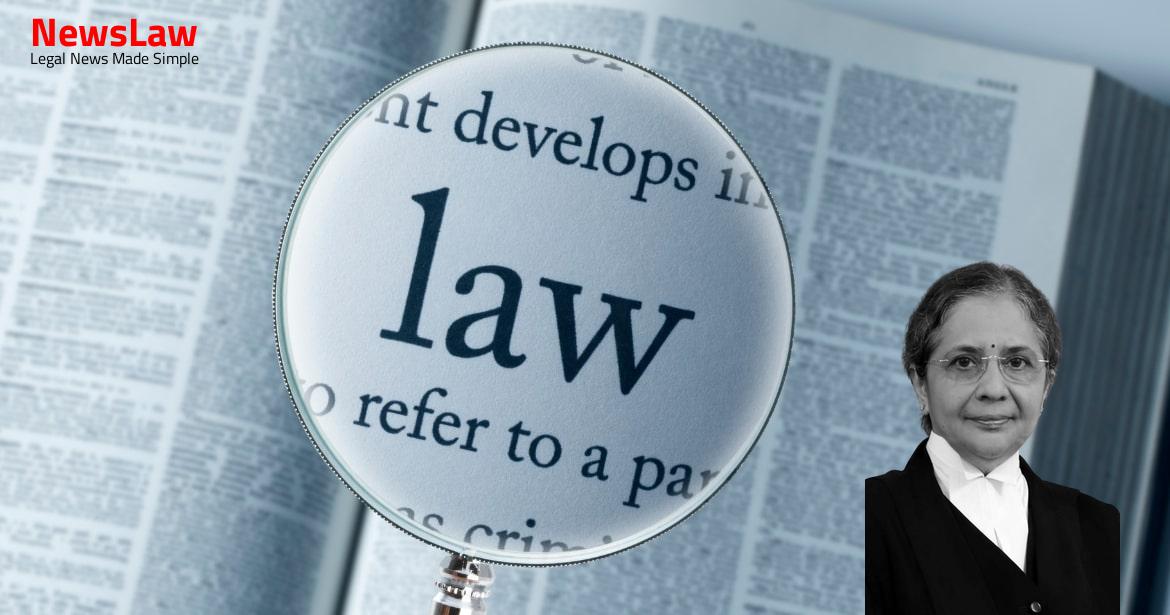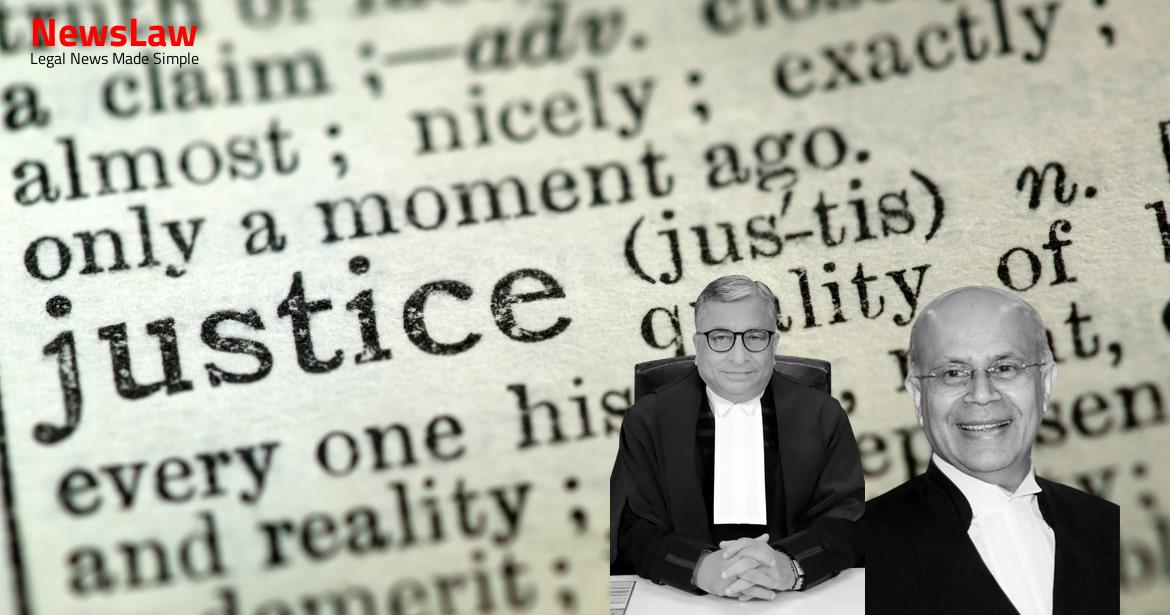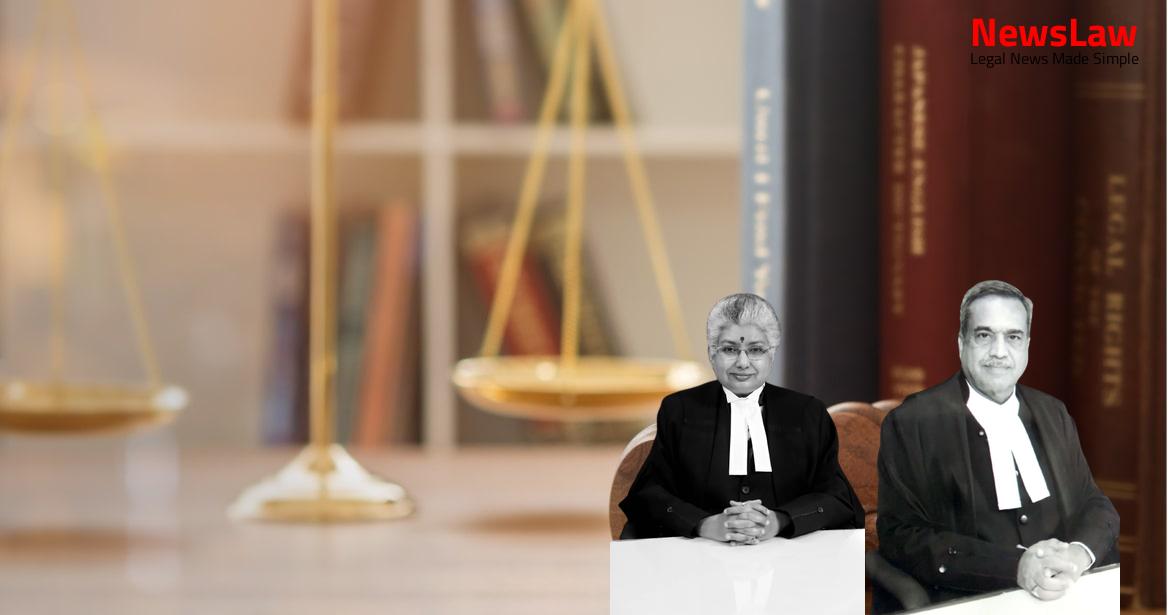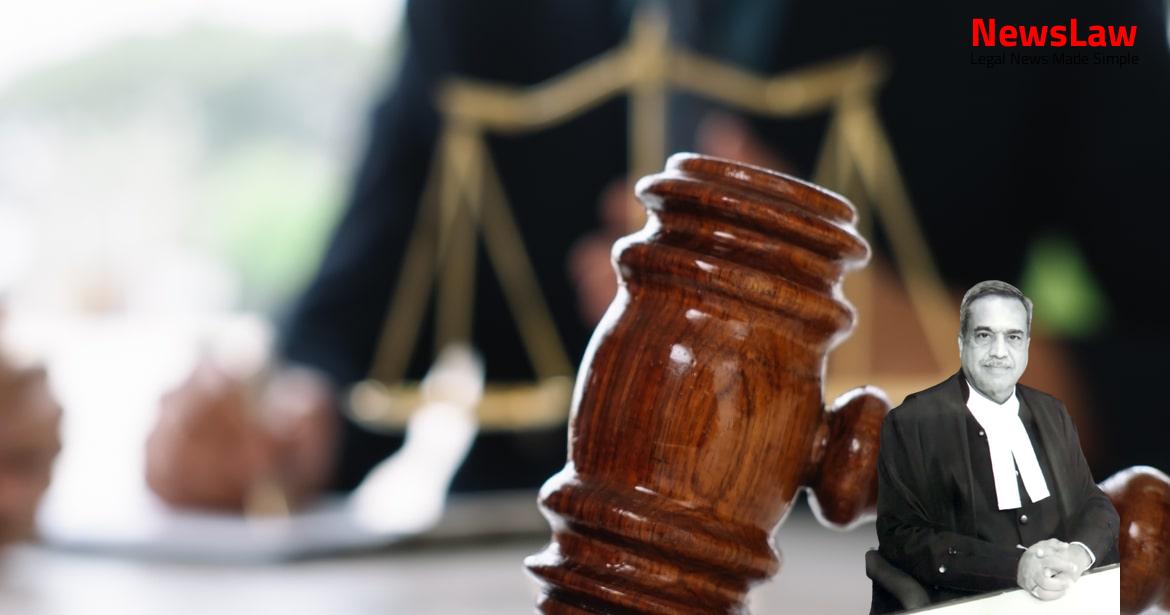According to the prosecution, on the night of 22.12.2000 some intruders entered the area where the Unit of 7 Rajputana Rifles of the Indian Army was stationed inside the Red Fort, New Delhi. The review petitioner, who was tried for said offences, was awarded death sentence vide judgment and order dated 31.10.2005 passed by the Court of Additional Sessions Judge, Delhi in Sessions Case Nos. However, the challenge was negated by this Court and the award of death sentence to the petitioner was affirmed vide judgment dated 10.8.2011, which has resulted in filing of the instant review petitions. The 4 Constitution Bench of this Court by its judgment dated 2.9.2014 concluded that in all cases in which death sentence was awarded by the High Court, such matters be listed before a Bench of three Judges. We, therefore, turn down Shri Venugopal’s plea that two additional Judges be added at the review stage in death sentence cases.” A question still arose: whether in matters where the review petitions had already stood rejected when the aforementioned decision was rendered by the Constitution Bench of this Court, could there be reopening of the matter and the review petition be reheard? The High Court has held proved the following circumstances against the appellant: “( a ) On the night of 22-12-2000 there was an incident of firing inside Lal Quila when some intruders had managed to enter that area of Lal Quila where the unit of 7 Rajputana Rifles of the Indian Army was stationed. ( d ) Immediately after the quick reaction team of the army fired back upon the intruders as a result of which the intruders escaped from the place of occurrence by scaling over the rear side boundary wall of Lal Quila towards the Ring Road side and when the place of occurrence was searched by the army men many assault rifle fired cartridge cases were recovered from the place of occurrence.
( g )
Also Read: https://newslaw.in/case-type/civil/courts-analysis-on-compliance-with-resolution-plan-conditions/
On 23-12-2000 when the policemen conducted search around Lal Quila in the hope of getting some clue about the culprits they found one piece of paper lying outside Lal Quila near the rear side boundary wall towards Ring Road side and on that piece of paper one Mobile Phone No 9811278510 was written.
Arif alias Ashfaq admitted his involvement in the shooting incident inside Lal Quila and also disclosed to the police about his another hide-out at G-73, Batla House, Muradi Road, Okhla, New Delhi and pursuant to his disclosure the police had gone to that hide-out where the occupant of that house started firing upon the police team and when the police team returned the firing, that person, who was later on identified by accused Mohd. Arif alias Ashfaq had also got recovered one AK-56 rifle and some ammunition from behind Lal Quila on 26-12-2000. Arif alias Ashfaq had been representing to the people coming in his contact during his stays at different places that he was a resident of Jammu and was doing the business of shawls while, in fact, he had no such business and he had been collecting money through hawala channels.
PW- 8 13/E purporting to be a photocopy of another ration card in his name with his residential address of Ghaziabad where he admittedly never resided and he submitted that document with the Ghaziabad Transport Authority for obtaining permanent driving licence. On the basis of the aforementioned circumstances, the High Court came to the conclusion that the appellant was responsible for the incident of shooting inside Lal Quila (Red Fort) on the night of 22-12-2000, which resulted in the death of three soldiers of army. The High Court has also deduced that it was at the instance of the appellant that the police could reach that spot. He was also held guilty for the offence under Section 14 of the Foreigners Act, since it was proved that the appellant, a foreigner, had entered the territory of India without obtaining the necessary permissions and clearance.
( 2 ) the facts so established should be consistent only with the hypothesis of the guilt of the accused, that is to say, they should not be explainable on any other hypothesis except that the accused is guilty, ( 3 ) the circumstances should be of a conclusive nature and tendency, 10 ( 4 ) they should exclude every possible hypothesis except the one to be proved, and ( 5 ) there must be a chain of evidence so complete as not to leave any reasonable ground for the conclusion consistent with the innocence of the accused and must show that in all human probability the act must have been done by the accused.”
State of Uttaranchal (2010) 2 SCC 583, the observation made is to the following effect: (SCC p. There must be a chain of evidence so far complete as not to leave any reasonable ground for conclusion consistent with the innocence of the accused and it must be such as to show that within all human probability, the act must have been done by the accused. … In drawing these inferences or presumptions, the court must have regard to the common course of natural events, and to human conduct and their relations to the facts of the particular case.” To the similar effect are the observations made in Vikram Singh v.
At times, there may be only a few circumstances available to reach a conclusion of the guilt on the part of the accused and at times, even if there are large numbers of circumstances proved, they may not be enough to reach the conclusion of guilt on the part of the accused. The prosecution proved 9 cash deposit slips of Grindlays Bank, the total amount being Rs 29,50,000. Exhibit PW-22/F is a copy of the account statement of Rehmana, the wife of the accused which suggests that from 15-9-2000 onwards up to 14-12-2000, on various dates, amounts like Rs 10,000, Rs 40,000, Rs 50,000, Rs 1,50,000, Rs 2,00,000, etc. Ali (PW 216), SSO, CFSL, CBI, New Delhi, on the basis of his report, deposed that the account opening form of HDFC Bank of the appellant, 9 deposit slips of Standard Chartered Grindlays Bank as also deposit slips of State Bank of India account of Rehmana Yusuf Farukhi bore the handwriting of the appellant. We may point out that there is absolutely no 13 explanation by the appellant either by way of cross- examination of the witnesses or by way of his statement under Section 313 CrPC as to where all these amounts had come from and why did he deposit huge amounts in the three accounts mentioned above. All this was supported by the fact that 9 deposit slips, the bank forms for opening the accounts, the slip through which the amount was deposited in the account of Rehmana Yusuf Farukhi, were all proved to be in the handwriting of the appellant. We have absolutely no reason to reject the evidence of the handwriting expert. On the other hand, it is submitted on behalf of the State, that the scope of a review petition even in matters arising out of award of death sentence would be extremely limited. There has to be an error apparent on the face of the record leading to miscarriage of justice to exercise the review jurisdiction under Article 137 read with Order 40 Rule 1. The Court may review its judgment or order, but no application for review will be entertained in a civil 16 proceeding except on the ground mentioned in Order , as affirmed by this Court in Arjun Panditrao Khotkar vs Kailash Kushanrao Gorantyal & Ors. The extension of the submission is that the entire fulcrum of the prosecution case rested on these CDRs and minus this evidence, there is hardly anything which could prove the identity and involvement of the petitioner in the crime in question. Admissibility of electronic records (i)
Also Read: https://newslaw.in/supreme-court/recall-of-order-and-legal-analysis-on-resolution-plan-requirements/
The central feature of the Prosecution case permeating the entire Judgment under Review are circumstances and inferences that have been drawn on the strength of anlysis of electronic records (CDRs).
II) (iii)In respect of 8510, Prosecution produced CDR which is Ex.PW-198/ B1-B3 (@ 57-59 of Vol.III) whereas for 2154 prosecution has produced CDRs Ex.PW-198/E (@67-75 of Vol.III) & Ex. The Court has acted upon oral testimony of PW-229 as to the contents of CDRs of 8510, and Ex.PW- 229/A (@ 48 of Vol.III) – unauthenticated secondary evidence of secondary evidence – with respect to contents of CDRs of 2154. It is the contention of the learned counsel that in the absence of a certificate issued under sub-section (4) of Section 65-B of the Evidence Act with the particulars enumerated in clauses (a) to (c), the information contained in the electronic record cannot be 19 adduced in evidence and in any case in the absence of examination of a competent witness acquainted with the functioning of the computers during the relevant time and the manner in which the printouts were taken, even secondary evidence under Section 63 is not admissible. The covering letter pertaining thereto and certain other mobile numbers were signed by the Security Manager of Bharti Cellular Limited. 35 series were filed by PW 35 who is the person that signed the covering letter dated 17th December bearing Ext. In case where the call is made and the receiver does not pick up the phone, the server which makes a loop of the route would not register it.” As far as PW 36 is concerned, he identified the signatures of the General Manager of his Company who signed Ext. Section 65 enables secondary evidence of the contents of a document to be adduced if the original is of such a nature as not to be easily movable. It may be that the certificate containing the details in sub-section (4) of Section 65-B is not filed in the instant case, but that does not mean that secondary evidence cannot be given even if the law permits such evidence to be given in the circumstances mentioned in the relevant provisions, namely, Sections 63 and 65. Both the witnesses were responsible officials of the companies concerned who deposed to the fact that they were the printouts obtained from the computer records. I suspect that it will very rarely be necessary to call an expert and that in the vast majority of cases it will be possible to discharge the burden by calling a witness who is familiar with the operation of the computer in the sense of knowing what the computer is required to do and who can say that it is doing it properly.” Such a view was expressed even in the face of a more stringent provision in Section 69 of the Police and Criminal Act, 1984 in the UK casting a positive obligation on the part of the prosecution to lead evidence in respect of proof of the computer record. As explained by the learned counsel for the State, the computer, at the first instance, instead of recording the IMEI number of the mobile instrument, had recorded the IMEI and cell ID (location) of the person calling/called by the subscriber. Further, on a 22 comparative perusal of the two call records, the details of the cell ID and the IMEI of the two numbers are also recorded. The very caption of Section 65-A of the Evidence Act, read with Sections 59 and 65-B is sufficient to hold that the special provisions on evidence relating to electronic record shall be governed by the procedure prescribed under Section 65-B of the Evidence Act. Section 65 enables secondary evidence of the contents of a document to be adduced if the original is of such a nature as not to be easily movable. Irrespective of the compliance with the requirements of Section 65-B, which is a provision dealing with admissibility of electronic records, there is no bar to adducing secondary evidence under the other provisions of the Evidence Act, namely, Sections 63 and 65.
The evidence relating to electronic record, as noted hereinbefore, being a special provision, the general law on secondary evidence under Section 63 read with Section 65 of the Evidence Act shall yield to the same. With the amendment to the Evidence Act in 2000, Sections 65-A and 65-B were introduced into Chapter V relating to documentary evidence. Sub- section (1) of Section 65-B makes admissible as a document, paper printout of electronic records stored in optical or magnetic media produced by a computer, subject to the fulfilment of the conditions specified in sub-section (2) of Section 65-B. Applying this test to the present case, if an objection was taken to the CDRs being marked without a certificate, the Court could have given the prosecution an opportunity to rectify the deficiency. We are satisfied that an objection that CDRs are unreliable due to violation of the procedure prescribed in Section 65- B(4) cannot be permitted to be raised at this stage as the objection relates to the mode or method of proof.”
26 21.
It was submitted that Section 65-B of the Evidence Act was a procedural provision to prove relevant admissible evidence and was intended to supplement the law on the point by declaring that any information in an electronic record, covered by the said provision, was to be deemed to be a document and admissible in any proceedings without further proof of the original. However, threshold 27 admissibility of an electronic evidence cannot be ruled out on any technicality if the same was relevant.” The last decision on the point is a three Judge bench decision of this Court in Arjun Panditrao Khotkar which was rendered on a reference to a larger bench because of the observations in Shafi Mohammad. Basheer, (2014) 10 SCC 473, as clarified by us hereinabove, is the law declared by this Court on Section 65-B of the Evidence Act., (2018) 2 SCC 801 and the judgment dated 3-4-2018 reported as Shafhi Mohd.
Basheer, (2014) 10 SCC 473 which reads as “… if an electronic record as such is used as primary evidence under Section 62 of the Evidence Act…” is thus clarified; it is to be read without the words “ under Section 62 of the Evidence Act,…”.
Appropriate rules and directions should be framed in exercise of the Information Technology Act, by exercising powers such as in Section 67-C, and also framing suitable rules for the retention of data involved in trial of offences, their segregation, rules of chain of custody, stamping and record maintenance, for the entire duration of trials and appeals, and also in regard to preservation of the metadata to avoid corruption. However, since the instant matter pertains to award of death sentence, this review petition must be considered in light of the decisions made by this Court in Anvar P.V. As was stated by this Court in paragraphs 151, 153, 159, 169 and finally summed up in paragraphs 183 and 184, the findings on the issue of the receipt and disbursal of money and the fact that the police could reach the spot referred to in Paragraph 184, at the instance of the review petitioner are very relevant and crucial circumstances. The disclosure statement led the police to the hide out at G-73, Batla House, New Delhi and when 31 the police team arrived with the review petitioner, there was firing upon the police team as stated in circumstance ‘g’ in paragraph 182.
The submission that such recovery of ammunition or the encounter of Abu Shamal could not be associated with the disclosure statement of the review petitioner is not quite correct. The present case, which has no parallel in the history of the Indian Republic, presents us in crystal- 32 clear terms, a spectacle of the rarest of rare cases. State of Maharashtra, (2013) 13 SCC 1, this Hon’ble Court while dealing with the award of the death sentence to persons convicted inter-alia under various IPC offences including Waging of War against the Government of India and the Prevention of Terrorism Act, discussed the wide ambit of the term “terrorism” and held that the offence of terrorism itself was an aggravating circumstance: “Terrorism” 809.
There is no particular form of terror, hence, anything intended to create terror in the minds of general public in order to endanger the lives of the members and damage to public property may be termed as a terrorist act and a manifestation of terrorism. State of Maharashtra, (2012) 9 SCC 1, this Hon’ble Court while convicting the Appellant therein for the terrorist attack of 26/11 in Mumbai, stated that facts of the case, the cross-border conspiracy, and the intention to strike fear into the heart of the victims, that the death sentence was warranted.
Case Title: MOHD.ARIF @ ASHFAQ Vs. STATE(NCT OF DELHI) (2022 INSC 1156)
Case Number: R.P.(Crl.) No.-000286-000287 / 2012



